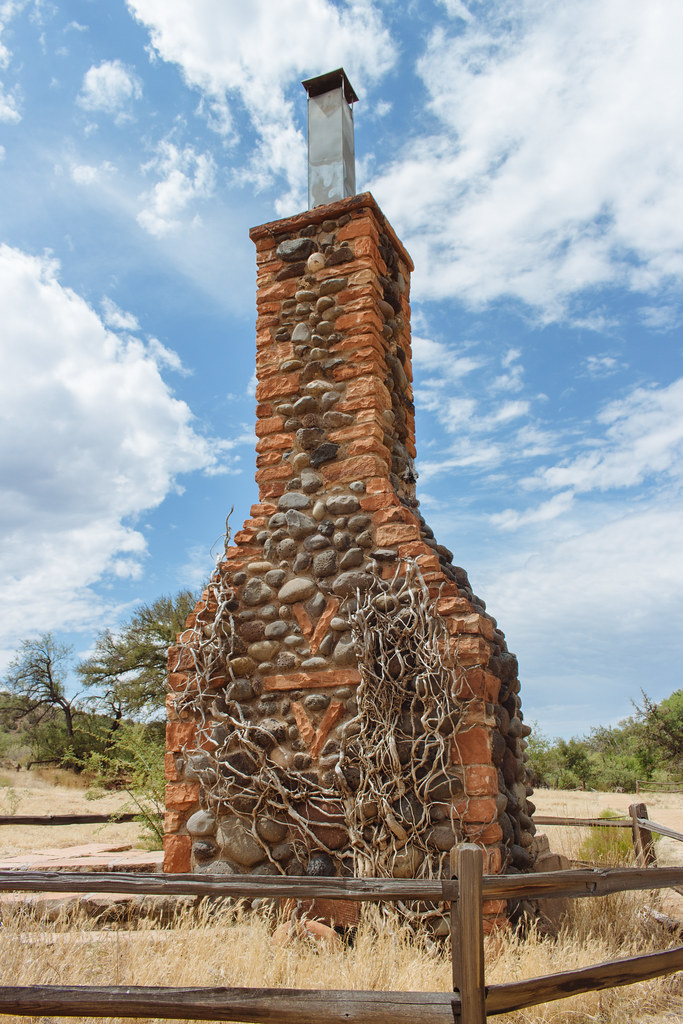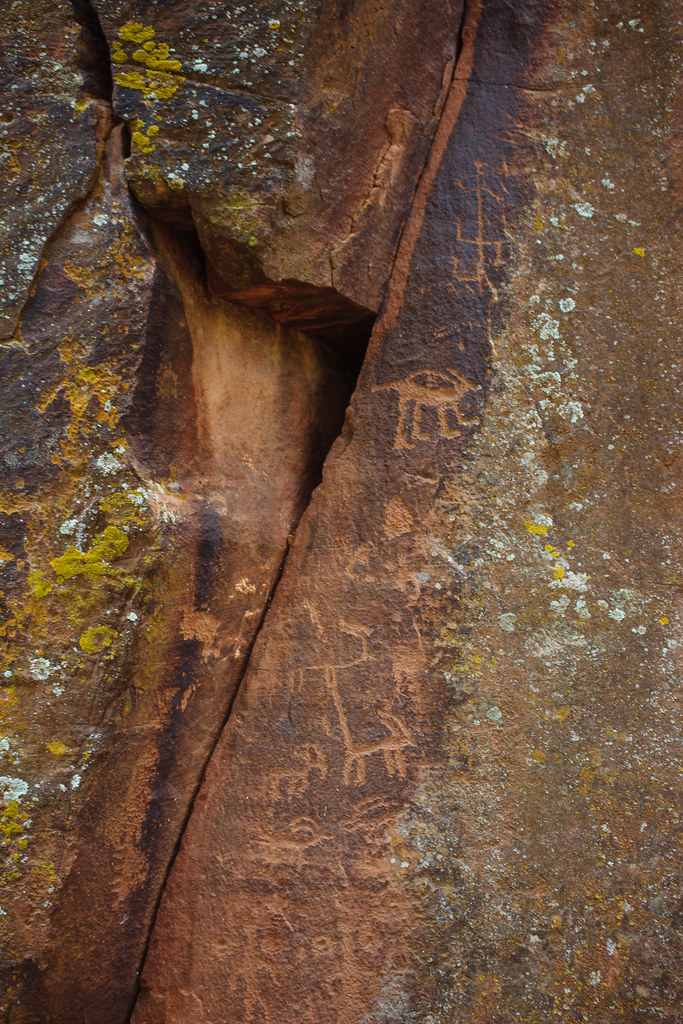Finding Petroglyphs in the Woods at Arizona’s V Bar V Heritage Site
 |
| Petroglyphs |
When I checked in at the Montezuma Well unit of Montezuma Castle National Monument, a volunteer ranger handed me a sparse, black-and-white paper map of the surrounding region and pointed out some places he recommended. One destination was an old ranch in central Arizona where he assured me I could find some petroglyphs out in the woods.
Seems legit, I thought.
I had already dragged my poor, formerly bright-white Toyota Corolla across one dirt road to get here, so what was one more?
 |
| See the “V Bar V” in the chimney? |
I rolled up to the parking lot for the V Bar V Heritage Site and was greeted with a handful of buildings and a monumental stone chimney.
It was all that was left from a ranch where livestock would have been branded with what looks like a math fraction with the letter V in the numerator and denominator spots: a V, a Bar, and a V.
 |
| The trail to the petroglyphs |
A five-minute walk through some grass brought me into the woods where I came across a hillside bearing multiple panels of petroglyphs. Smooth cliff walls coated in desert varnish had been pecked away to reveal shapes, figures, and symbols in negative. According to the U.S. Forest Service, it’s the largest collection of petroglyphs in the entire Verde Valley, which is home to numerous archaeological sites.
I stood in silence in front of this vast rock face decorated with humans and animals, shapes and squigglies. I wondered what it all must have meant to the prehistoric people who once lived here: was it a pantheon of gods, a storybook in stone, a touchpoint to the spiritual realm, a field guide for hunters, or something else entirely?
 |
| More petroglyphs |
At the very least, it functioned as a calendar. On the solstices and equinoxes, several small boulders above the wall of petroglyphs cast a precise shadow that slowly creeps down cracks in the rock before piercing right down the middle of a spiral shape, which likely represents the Sun. It would have been critical for those who chiseled these petroglyphs to know the precise dates of these astronomical events, dates that determined when to sow seeds or harvest crops.
These ancient petroglyphs, the remnants of an old ranch, and the continued existence of both Native and non-Native communities all tell us that the Verde Valley has always been one of the most attractive places to farm, ranch, and call home in what is now Arizona.
 |
| Even more petroglyphs |
How to get there
V Bar V Heritage Site can be reached in Coconino National Forest by exiting Interstate 17 at exit 298. Instead of taking State Route 179 north toward Sedona, head 2.8 miles southeast along the unmarked Forest Service Road 618. There’s a small parking lot on the right side of the road just after you pass Beaver Creek and a campground.